Return to Book Index
The Introduction of Self-Registering
Meteorological Instruments
Robert P. Multhauf
THE FIRST SELF-REGISTERING INSTRUMENTS 99
SELF-REGISTERING SYSTEMS 105
CONCLUSIONS 114
[Pg 96]
The Introduction of
SELF-REGISTERING
METEOROLOGICAL
INSTRUMENTS
Robert P. Multhauf
The development of self-registering meteorological instruments
began very shortly after that of scientific meteorological
observation itself. Yet it was not until the 1860's, two centuries
after the beginning of scientific observation, that the
self-registering instrument became a factor in meteorology.
This time delay is attributable less to deficiencies in the
techniques of instrument-making than to deficiencies in the
organisation of meteorology itself. The critical factor was the
establishment in the 1860's of well-financed and competently
directed meteorological observatories, most of which were created
as adjuncts to astronomical observatories.
The Author: Robert P. Multhauf is head curator of the department
of science and technology in the United States National Museum,
Smithsonian Institution.
The flowering of science in the 17th century was accompanied by an
efflorescence of instrument invention as luxurious as that of science
itself. Although there were foreshadowing events, this flowering seems
to have owed much to Galileo, whose interest in the measurement of
natural phenomena is well known, and who is himself credited with the
invention of the thermometer and the hydrostatic balance, both of which
he devised in connection with experimentation on specific scientific
problems. Many, if not most, of the other Italian instrument inventors
of the early 17th century were his disciples. Benedetto Castelli, being
interested in the effect of rainfall on the level of a lake, constructed
a rain gauge about 1628. Santorio, well known as a pioneer in the
quantification of animal physiology, is credited with observations,
about 1626, that led to the development of the hygrometer.
Both of these contemporaries were interested in Galileo's most famous
invention, the thermoscope—forerunner of the thermometer—which he
[Pg 97]developed about 1597 as a method of obtaining comparisons of
temperature. The utility of the instrument was immediately recognized by
physicists (not by chemists, oddly enough), and much ingenuity was
expended on its perfection over a 50-year period, in northern Europe as
well as in Italy. The conversion of this open, air-expansion thermoscope
into the modern thermometer was accomplished by the Florentine Accademia
del Cimento about 1660.

Figure 1.—A set of typical Smithsonian meteorological
instruments as recommended in instructions to observers issued by the
Institution in the 1850's. Top (from left): maximum-minimum
thermometer of Professor Phillips, dry-bulb and wet-bulb thermometers,
and mercurial barometer by Green of New York. Lower left: rain gauge.
The wet-bulb thermometer, although typical, is actually a later
instrument. The rain gauge is a replica.
Galileo also inspired the barometer, through his speculations on the
vacuum, which, in 1643, led his disciple Torricelli to experiments
proving the limitation to nature's horror of a vacuum. Torricelli's
apparatus, unlike Galileo's thermoscope, represented the barometer in
essentially its classical form. In his earliest experiments, Torricelli
observed that the air tended to become "thicker and thinner"; as a
consequence, we find the barometer in use (with the thermometer) for
meteorological observation as early as 1649.[1]
The meetings of the Accademia terminated in 1667, but the 5-year-old
Royal Society of London had already become as fruitful a source of new
instruments, largely through the abilities of its demonstrator, Robert
Hooke, whose task it was to entertain and instruct the members with
experiments. In the course of devising these experiments Hooke became
perhaps the most prolific instrument inventor of all time. He seems to
have invented the first wind pressure gauge, as an aid to seamen, and he
improved the bathometer, hygrometer, hydrometer, and barometer, as well
as instruments not directly involved in measurement such as the vacuum
pump and sea-water sampling devices. As in Florence, these instruments
were immediately brought to bear on the observation of nature.
It does not appear, however, that we would be justified in concluding
that the rise of scientific meteorology was inspired by the invention of
instruments, for meteorology had begun to free itself of the traditional
weather-lore and demonology early in the 17th century. The Landgraf of
Hesse described some simultaneous weather observations, made without
instruments, in 1637. Francis Bacon's "Natural History of the Wind,"
considered the first special work of this kind to attain general
circulation, appeared in 1622.[2] It seems likely that the rise of
scientific meteorology was an aspect of the general rationalization of
nature study which occurred at this time, and that the initial impetus
for such progress was gained not from the invention of instruments but
from the need of navigators for wind data at a time when long voyages
out of sight of land were becoming commonplace.
[Pg 98]
It should be noted in this connection that the two most important
instruments, the thermometer and barometer, were in no way inspired by
an interest in meteorology. But the observation made early in the
history of the barometer that the atmospheric pressure varied in some
relationship to visible changes in the weather soon brought that
instrument into use as a "weather glass." In particular, winds were
attributed to disturbances of barometric equilibrium, and
wind-barometric studies were made by Evangelista Torricelli, Edmé
Mariotte, and Edmund Halley, the latter publishing the first
meteorological chart. In 1678-1679 Gottfried Leibniz endeavored to
encourage observations to test the capacity of the barometer for
foretelling the weather.[3]
Other questions of a quasi-meteorological nature interested the
scientists of this period, and brought other instruments into use.
Observations of rainfall and evaporation were made in pursuit of the
ancient question of the sources of terrestrial water, the maintenance of
the levels of seas, etc. Physicians brought instruments to bear on the
question of the relationship between weather and the incidence of
disease. The interrelationship between these various meteorological
enterprises was not long in becoming apparent. Soon after its founding
in 1657 the Florentine academy undertook, through the distribution of
thermometers, barometers, hygrometers, and rain gauges, the
establishment of an international network of meteorological observation
stations, a network which did not survive the demise of the Accademia
itself ten years later.
Not for over a century was the first thoroughgoing attempt made at
systematic observation. There was a meteorological section in the
Academy of Sciences at Mannheim from 1763, and subsequently a separate
society for meteorology. In 1783, the Academy published observations
from 39 stations, those from the central station comprising data from
the hygrometer, wind vane (but not anemometer), rain gauge,
evaporimeter, and apparatus for geomagnetism and atmospheric
electricity, as well as data from the thermometer and barometer. The
Mannheim system was also short-lived, being terminated by the Napoleonic
invasion, but systems of comparable scope were attempted throughout
Europe and America during the next generation.
In the United States the office of the Surgeon General, U. S. Army,
began the first systematic observation in 1819, using only the
thermometer and wind vane, to which were added the barometer and
hygrometer in 1840-1841 and the wind force anemometer, rain gauge, and
wet bulb thermometer in 1843. State weather observation systems
meanwhile had been inaugurated in New York (1825), Pennsylvania (1836),
and Ohio (1842).[4]
Nearly 200 years of observation had not, however, noticeably improved
the weather, and the naive faith in the power of instruments to reveal
its mysteries, which had possessed many an early meteorologist, no
longer charmed the scientist of the early 19th century. In the first
published report of the British Association for the Advancement of
Science in 1833, J. D. Forbes called for a reorganization of procedures:
In the science of Astronomy, for example, as in that of Optics, the
great general truths which emerge in the progress of discovery,
though depending for their establishment upon a multitude of
independent facts and observations, possess sufficient unity to
connect in the mind the bearing of the whole; and the more
perfectly understood connexion of parts invites to further
generalization.
[Pg 99]Very different is the position of an infant science like
Meteorology. The unity of the whole ... is not always kept in view,
even as far as our present very limited general conceptions will
admit of: and as few persons have devoted their whole attention to
this science alone ... no wonder that we find strewed over its
irregular and far-spread surface, patches of cultivation upon spots
chosen without discrimination and treated on no common principle,
which defy the improver to inclose, and the surveyor to estimate
and connect them. Meteorological instruments have been for the most
part treated like toys, and much time and labor have been lost in
making and recording observations utterly useless for any
scientific purpose. Even the numerous registers of a rather
superior class ... hardly contain one jot of information ready for
incorporation in a Report on the progress of Meteorology....
The most general mistake probably consists in the idea that
Meteorology, as a science, has no other object but an experimental
acquaintance with the condition of those variable elements which
from day to day constitute the general and vague result of the
state of the weather at any given spot; not considering that ...
when grouped together with others of the same character, [they] may
afford the most valuable aid to scientific generalization.[5]
Forbes goes on to call for a greater emphasis on theory, and the
replacement of the many small-scale observatories with "a few great
Registers" to be adequately maintained by "great Societies" or by the
government. He suggests that the time for pursuit of theory might be
gained from "the vague mechanical task to which at present they
generally devote their time, namely the search for great numerical
accuracy, to a superfluity of decimal places exceeding the compass of
the instrument to verify."
From its founding the British Association sponsored systematic
observation at various places. In 1842 it initiated observations at the
Kew Observatory, which has continued until today to be the premier
meteorological observatory in the British Empire. The American scientist
Joseph Henry observed the functioning of an observatory maintained by
the British Association at Plymouth in 1837, and when he became
Secretary of the new Smithsonian Institution a few years later he made
the furtherance of meteorology one of its first objectives.
The Kew Observatory set a pattern for systematic observation in England
as, from 1855, did the Smithsonian Institution in the United States. The
instruments used differed little from those in use at Mannheim over half
a century earlier[6] (fig. 1). They were undoubtedly more accurate, but
this should not be overstressed. Forbes had noted in his report of 1832
that some scientists were then calling for a return to Torricelli, for
the construction of a temporary barometer on the site in preference to
reliance on the then existing manufactured instruments.
The First Self-Registering Instruments
From the middle of the 17th century meteorological observations were
recorded in manuscript books known as "registers," many of which were
published in the early scientific journals. The most effective
utilization of these observations was in the compilation of the history
of particular storms, but where a larger synthesis was concerned they
tended, as Forbes has shown, to show themselves unsystematic and
non-comparable. The principal problems of meteorological observation
have been from the outset the construction of precisely comparable
instruments and their use to produce comparable records. The former
problem has been frequently discussed, and perhaps, as Forbes suggests,
overemphasized. It is the latter problem with which we are here
concerned.
The idea of mechanizing the process of observation, not yet accomplished
in Forbes' time, had been put forward within a little over a decade of
the first use of the thermometer and barometer in meteorology. On
December 9, 1663, Christopher Wren presented the Royal Society with a
design for a "weather clock," of which a drawing is extant.[7] This
drawing (fig. 2) [Pg 100]shows an ordinary clock to which is attached a
pencil-carrying rack, geared to the hour pinion. A discussion of the
clock's "reduction to practice" began the involvement of Robert Hooke,
who was "instructed" in September 1664 to make "a pendulum clock
applicable to the observing of the changes in the weather."[8] This
tribute to Hooke's reputation—and to the versatility of the mechanic
arts at this time—was slightly overoptimistic, as 15 years ensued
before the clock made its appearance.
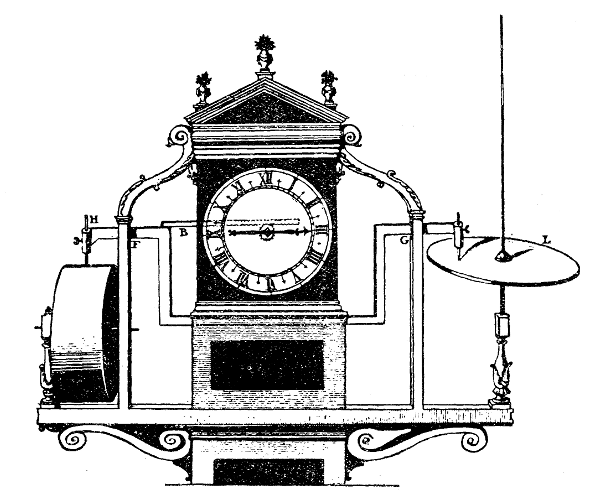
Figure 2.—A contemporary drawing of Wren's "weather clock." (Photo
courtesy Royal Society of London.)
References to this clock are frequent in the records of the Royal
Society—being mainly periodic injunctions to Hooke to get on with the
work—until its completion in May 1679. The description which Hooke was
asked to supply was subsequently found among his papers and printed by
William Derham as follows:[9]
The weather-clock consists of two parts; first, that which
measures the time, which is a strong and large pendulum-clock,
which moves a week, with once winding up, and is sufficient to turn
a cylinder (upon which the paper is rolled) twice round in a day,
and also to lift a hammer for striking the punches, once every
quarter of an hour.
[Pg 101]Secondly, of several instruments for measuring the degrees of
alteration, in the several things, to be observed. The first is,
the barometer, which moves the first punch, an inch and half,
serving to shew the difference between the greatest and the least
pressure of the air. The second is, the thermometer, which moves
the punch that shews the differences between the greatest heat in
summer, and the least in winter. The third is, the hygroscope,
moving the punch, which shews the difference between the moistest
and driest airs. The fourth is, the rain-bucket, serving to shew
the quantity of rain that falls; this hath two parts or punches;
the first, to shew what part of the bucket is fill'd, when there
falls not enough to make it empty itself; the second, to shew how
many full buckets have been emptied. The fifth is the wind vane;
this hath also two parts; the first to shew the strength of the
wind, which is observed by the number of revolutions in the
vane-mill, and marked by three punches; the first marks every
10,000 revolutions, the second every 1,000, and the third every
100: The second, to shew the quarters of the wind, this hath four
punches; the first with one point, marking the North quarters, viz.
N.: N. by E.: N. by W.: NNE.: NNW.: NE. by N. and N.W. by N.: NE.
and N.W. The second hath two points, marking the East and its
quarters. The third hath three points, marking the South and its
quarters. The fourth hath four points, marking the West and its
quarters. Some of these punches give one mark, every 100
revolutions of the vane-mill.
The stations or places of the first four punches are marked on a
scrowl of paper, by the clock-hammer, falling every quarter of an
hour. The punches, belonging to the fifth, are marked on the said
scrowl, by the revolutions of the vane, which are accounted by a
small numerator, standing at the top of the clock-case, which is
moved by the vane-mill.
What, exactly, were the instruments applied by Hooke to his weather
clock? It is not always easy even to guess, because it appears that Wren
was actually the first to contrive such a device and seems to have
developed nearly as many instruments as Hooke. It might be supposed that
Hooke would have adapted to the weather clock his wheel-barometer,
introduced in 1667, but it also appears that Wren had described (and
perhaps built) a balance barometer before 1667.[10] As to the
thermometer, we have no evidence of original work by Hooke, but we do
have a description of Wren's self-registering thermometer, a circular,
mercury-filled tube in which changes in temperature move "the whole
instrument, like a wheel on its axis."[11]
The hygroscope (hygrometer) probably existed in more versions than any
other instrument, although we know nothing of any versions by Wren.
Hooke may have used his own "oat-beard" instrument.[12] Derham follows
his description of the clock—which has been quoted above—with a
detailed description of a tipping-bucket rain gauge invented by Hooke
and used with the clock. He also notes that in 1670 Hooke had described
two other types of rain gauge in which a bucket was counterbalanced in
one case by a string of bullets and in another by an immersed weight.
But here again, Sprat records the invention of a tipping-bucket gauge by
Wren before 1667.
Hooke has been generally regarded as the first inventor of an
anemometer, in 1662.[13] But this invention was a pressure-plate
gauge—that is, a metal plate held with its face against the
wind—whereas the gauge used with the weather clock is clearly a
windmill type, of which type this may be the first. Wren also had an
anemometer, but we have no description of it. Hooke's account does not
refer to other instruments which the weather clock is supposed to have
had, according to a description quoted by Gunther, which concludes the
enumeration of the elements recorded with "sunshine, etc."[14] One can
only wish for further information on the mechanism by which the
punches—or in Wren's clock, the pencils—were moved. But it is apparent
that Hooke's clock was actually used for some time.
[Pg 102]
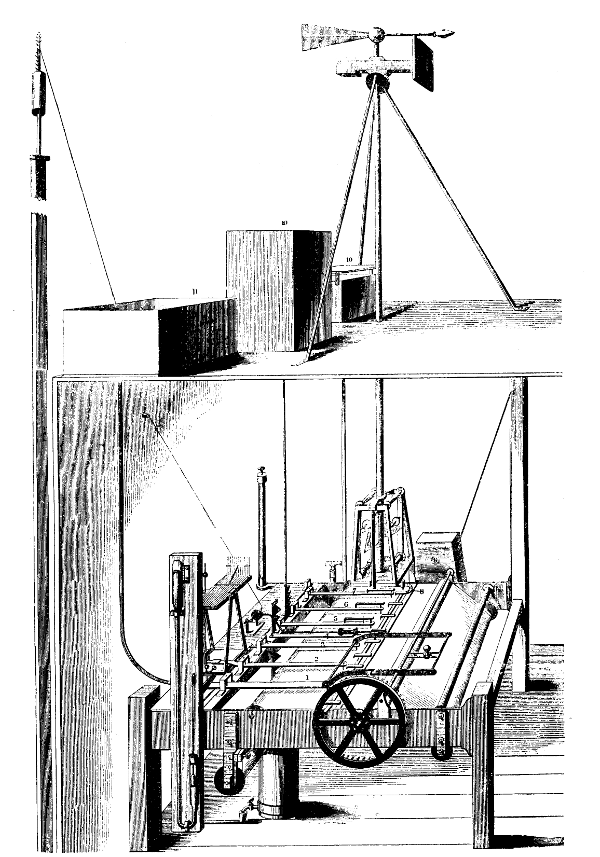
Figure 3.—Dolland's "atmospheric recorder": 1, siphon and float
barometer; 2, balance (?) thermometer; 3, hygrometer; 4, electrometer;
5, float rain gauge; 6, float evaporimeter; 7, suspended-weight wind
force indicator; 8, wind direction indicator; 9, clock; 10, receivers
for rain gauge and evaporimeter. (From Official ... Catalogue of the
Great Exhibition, 1851, London, 1851, pt. 2).
[Pg 103]
The 17th century was not entirely unprepared for the idea of such a
self-registering instrument. Water clocks and other devices in which
natural forces governed a pointer were known in antiquity, as were
counters of the type of the odometer. A water clock described in Italy
in 1524 was essentially an inversion of one of Hooke's rain gauges, that
in which a bucket was balanced against a string of bullets.[15] The
mechanical clock also had a considerable history in the 17th century,
and had long since been applied to the operations of figures through
cams, as was almost certainly the case with the punches in Hooke's
clock. Still, the combination of an instrument-actuated pointer with a
clock-actuated time-scale and a means of obtaining a permanent record
represent a group of innovations which certainly ranks among the
greatest in the history of instrumentation. It appears that we owe these
innovations to Wren and Hooke.
Hooke's clock contributed nothing to the systematization of
meteorological observation, and the last record of it appears to have
been a note on its "re-fitting" in 1690. Its complexity is sufficient
reason for its ephemeral history, but complexity in machine design was
the fashion of the time and Hooke may have intended no more than a
mechanistic tour de force. On the other hand, he may have recognized
the desideratum to which later meteorologists frequently returned—the
need for simultaneous observations of several instruments on the same
register. In any case, no instrument so comprehensive seems to have been
attempted again until the middle of the 19th century, when George
Dolland exhibited one at the Great Exhibition in London (see fig. 3).
The weather elements recorded by Dolland's instrument were the same as
those recorded by Hooke's, except that atmospheric electricity (unknown
in Hooke's time) was recorded and sunshine was not recorded. Striking
hammers were used by Dolland for some of the instruments and "ever
pointed pencils" for the others. Dolland's barometer was a wheel
instrument controlling a hammer. His thermometric element consisted of
12 balanced mercury thermometers. Its mode of operation is not clear,
but it probably was similar to that of the thermometer developed by Karl
Kreil in Prague about the same time (fig. 4). Dolland's wind force
indicator consisted of a pressure plate counterbalanced by a string of
suspended weights. Altogether, it is not clear that Dolland's instrument
was superior to Hooke's, or that its career was longer.[16]
The 171 years between these two instruments were not lacking in
inventiveness in this field, but even though inventors set the more
modest aim of a self-recording instrument for a single piece of
meteorological data, their brain children were uniformly still-born.
Then, during the period 1840-1850, we see the appearance of a series of
self-registering instruments which were actually used, which were widely
adopted by observatories, and which were superseded by superior
instruments rather than abandoned. This development was undoubtedly a
consequence of the establishment at that time of permanent observatories
under competent scientific direction.
Long experience had demonstrated to the meteorologists of the 1840's
that the principal obstacle to the success of self-registering
instruments was friction. Forbes had indicated that the most urgent need
was for automatic registration of wind data, as the erratic fluctuation
of the wind demanded more frequent observation than any manual system
could accomplish. Two of the British Association's observers produced
separate recording instruments for wind direction and force in the late
1830's, a prompt response which suggests that it was not the idea which
was lacking. One of these instruments—designed by William
Whewell—contained gearing, the friction of which vitiated its utility
as it had that of a number of predecessors. The other, designed by A.
Follet Osler, was free of gearing; it separately recorded wind pressure
and direction on a sheet of paper moved laterally by clockwork. The
pressure element was a spring-loaded pressure plate carried around by
the vane to face the wind. Both this plate and the vane itself were made
to move pencils through linkages of chains and pulleys.[17] Osler's
anemometer (fig. 5) deserves to be called the first successful
self-registering meteorological instrument; it was standard equipment in
British observatories until the latter part of the 19th century when it
was replaced by the cup-anemometer of Robinson.
[Pg 104]
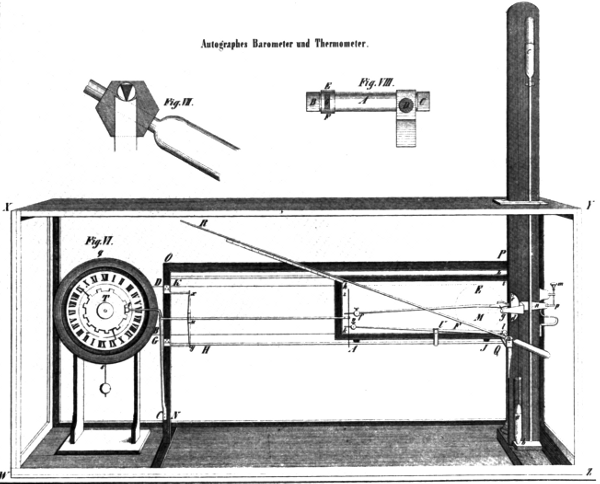
Figure 4.—Kreil's balance thermometer, 1843. (From Karl Kreil,
Magnetische und meteorologische Beobachtungen zu Prag, Prague, 1843,
vol. 3, fig. 1.)
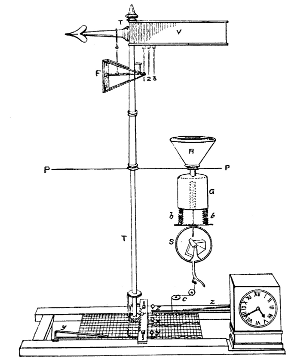
Figure 5.—Osler's self-registering pressure plate anemometer, 1837.
The instrument is shown with a tipping-bucket rain gauge. (From Abbe,
op. cit. footnote 17.)
Self-recording barometers and thermometers were more vulnerable to the
influence of friction than were wind instruments, but fortunately
pressure and temperature were also less subject to sudden fluctuation,
and so self-registration was less necessary. Nevertheless, two events
occurred in the 1840's which led to the development of self-registering
instruments. One event was the development of the geomagnetic
observatory, which used the magnetometer, an instrument as delicate as
the barometer [Pg 105]and thermometer, and (as it then seemed), as subject to
fluctuation as the wind vane. The other event was the development of
photography, making possible a recording method free of friction. In
1845 Francis Ronalds at Kew Observatory and Charles Brooke at Greenwich
undertook to develop apparatus to register the magnetometer,
electrometer, thermometer, and barometer by photography.[18] This was
six years after Daguerre's discovery of the photographic process. The
magnetometers of both investigators were put into use in 1847, and the
barometers and thermometers shortly after. They were based on the
deflection—by a mirror in the case of the magnetometer and electrometer
and by the mercury in the barometer and thermometer—of a beam of light
directed against a photographic plate. Brooke exhibited his instruments
at the Great Exhibition of 1850, and they subsequently became items of
commerce and standard appurtenances of the major observatory until
nearly the end of the century (fig. 6). Their advantages in accuracy
were finally insufficient to offset the inconvenience to which a
photographic instrument was subject.
Before 1850 the British observatories at Kew and Greenwich (the latter
an astronomical observatory with auxiliary meteorological activity) had
self-registering apparatus in use for most of the elements observed.
Self-Registering Systems
In 1870 the Signal Corps, U.S. Army, took on the burden of official
meteorology in the United States as the result of a joint resolution of
the Congress and in accordance with Joseph Henry's dictum that the
Smithsonian Institution should not become the permanent agency for such
scientific work once its permanency had been decided upon. Smithsonian
meteorology had not involved self-recording instruments, and neither did
that of the Signal Corps at the outset "because of the expense of the
apparatus, and because nothing of that kind was at that time
manufactured in this country."[19]
But almost immediately after 1870 the Signal Corps undertook an
evidently well-financed program for the introduction of
self-registration. "Complete outfits" were purchased, representing
Wild's system, the Kew system as made by Beckley, Hipp's system (fig.
8), Secci's meteorograph (figs. 9, 10), Draper's system, and Hough's
printing barograph and thermograph. Of these only the Kew system, the
photographic system already mentioned, could have been obtained before
1867.

Figure 6.—Photographic registering mercurial barometer, typical
commercial version. (From J. J. Hicks, Catalogue of ... Meteorological
Instruments, London, n.d., about 1870.)
Like Kew, Daniel Draper's observatory in Central Park, New York City,
was established primarily for meteorological observation.[20] Draper was
one of the sons of the prominent scientist J. W. Draper. Hipp was an
instrument-maker of Neuchâtel who specialized in precision clocks.[21]
The others after whom [Pg 106]these "systems" were named were directors of
astronomical observatories, which were, at this time, the most active
centers of meteorological observation. Wild was at the Bern
Observatory,[22] Secci at the Papal Observatory, Rome,[23] and George
Hough at the Dudley Observatory, Albany, New York.[24] While the Signal
Corps seems to have acquired all of the principal "systems," some
interesting instruments were developed at still other observatories,
notably by Kreil at the astronomical observatory in Prague.[25] The
principal impetus for this full-scale mechanization of observation
undoubtedly came from the directors of astronomical observatories.
Thus within little more than the decade of the 1860's were developed
five new systems of meteorological self-registry that were sufficiently
well thought of to be adopted or copied by observatories outside their
places of origin. Wild and Draper tell us that it was decided when their
respective observatories were established—in 1860 and 1868—that all
instruments should be self-registering. Each was obliged to design his
own, being dissatisfied with the photographic registers commercially
available. The development of these systems would therefore appear to
have been due, in part, to the general spread of a conviction that
satisfactory instruments were attainable.
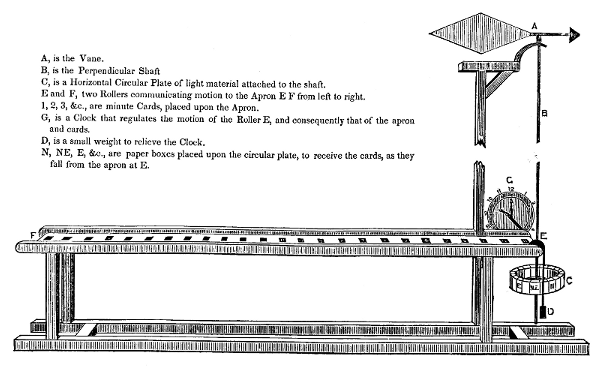
Figure 7.—In 1838 the pioneer American meteorologist James H. Coffin
(1806-1873) devised a self-registering wind direction indicator; in 1849
he improved it as shown here. The band, moved by clockwork, carries
cards marked with the day and hour. In Coffin's earlier instrument, a
part of which is now in the Smithsonian Institution, the vane carried a
funnel for sand, which ran into a circular row of bottles. (From
Proceedings of the American Association for the Advancement of
Science, 1849, vol. 2, p. 388.)
This confidence was warranted, for the decade of the 1850's had seen the
appearance of major innovations in the basic instruments—thermometer,
barometer, and wind velocity indicator—that made available instruments
more adaptable to self-registration. It also saw the development of a
new method of electrical registration derived from the telegraph. Sir
Charles Wheatstone initiated this small revolution in 1843 when he
reported to the British Association that he had constructed an
electromagnetic meteorological register which "records the indications
of the [Pg 107]barometer, thermometer and the psychrometer [meaning wet-bulb
thermometer] every half hour ... and prints the results on a sheet of
paper in figures," running a week unattended. The working of this
register involved the insertion of a conductor in the tubes to make a
circuit, the thermometers having open tops.[26] This was ten years after
the development of the electromagnetic relay and six years after
Wheatstone's introduction of his own telegraph.
Wheatstone's instrument left a very ephemeral record in the
meteorological literature, and appears to have been defective or out of
fashion with its time, which was concerned with the introduction of
photographic instruments. Wheatstone's work was rediscovered, along with
that of several other much earlier inventors, by the determined
observatory directors of the 1860's.
Of the five systems developed at that time, four used electromagnetic
registration, only Draper adhering to a mechanical system (see fig. 11).
For temperature measurement Secci and Hough used Wheatstone's electrical
system with a mercurial thermometer (fig. 12), but the other four
utilized a physical principle which had been proposed periodically for
at least a century—the unequal thermal expansion of a bimetallic strip.
This principle had been utilized by watchmakers for a quite different
purpose—the temperature compensation of the watch pendulum—but its
possibilities as a thermometer had been known long before the mid-19th
century.[27]
[Pg 108]
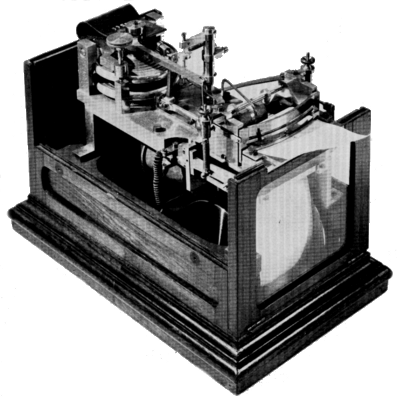
Figure 8.—Hipp's registering aneroid barometer, with a telegraphic
printer.
(USNM 314544; Smithsonian photo 46740-D.)
For the measurement of pressure, Secci, Wild, and Draper adopted, or
rediscovered, the balance barometer devised by Wren in the 17th century.
In this type of instrument (see figs. 13, 15) either the tube or the
reservoir of the barometer is attached to one arm of a balance, the
equilibrium of which is disturbed by the movement of the mercury in the
instrument.[28]
[Pg 109]
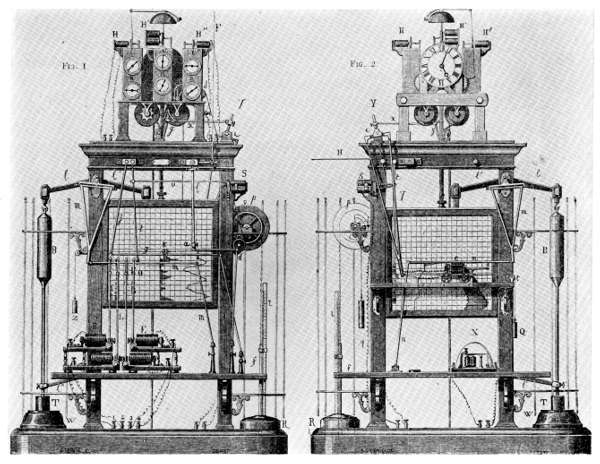
Figure 9.—Front and rear views of Secci's meteorograph,
1867. (From Lacroix, op. cit. footnote 22.)
Hough's barometer was an adaptation of the electrical contact
thermometer. The movement of the mercury over a certain minute distance
within the tube served as a switch to energize an electrical recording
system. Hipp, who was perhaps the latest of this group, first applied
the aneroid barometer (fig. 8) to self-registration. The idea of the
aneroid—an air-tight bellows against which the atmospheric pressure
would act—had been advanced by Leibniz in the 17th century and had been
the subject of a few abortive experiments in the 18th century. Not until
1848 was an instrument produced that was acceptable to users of the
barometer.[29]
As a wind velocity instrument all six systems used the cup-anemometer
developed by Robinson in 1846, an instrument whose chief virtue was the
care which its inventor had taken to work out the relationship between
its movement and the actual velocity of the wind.[30] Beckley and Draper
caused it to move a pencil through gearing; the others used with it
electromagnetic counters actuated by rotating contacts.
[Pg 110]

Figure 10.—Chart from Secci's meteorograph. (From
Lacroix, op. cit. footnote 22.)
As has been indicated, the Signal Corps used all six systems, a panoply
of gadgetry which must have been wondrous to behold. Its Secci
meteorograph, which had attracted much attention at Paris, was estimated
to have cost 15,000 francs. Abbe reported in 1894 that the instruments
were long kept in the apparatus room "as a fascinating show to visitors
and a stimulation to the staff in the invention of other
instruments."[31]
[Pg 111]
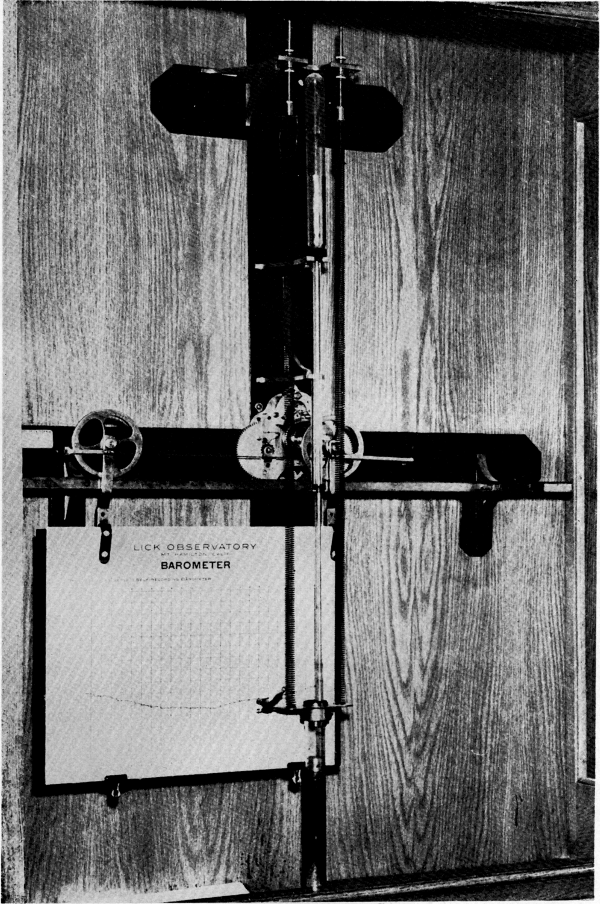
Figure 11.—Draper's mechanical registering barometer,
as used in the Lick Observatory. (Photo courtesy Lick Observatory.)
[Pg 112]

Figure 12.—Hough's electromechanical registering
barometer, about 1871.
[Pg 113]

Figure 13.—Fuess' "balance barometer after Samuel
Morland," 1880. Wren probably was the originator of this type of
instrument. (From Loewenherz, op. cit. footnote 28.)

Figure 14.—Marvin's mechanical registering barometer,
1905. This instrument was formerly in the U.S. Weather Bureau. (USNM
316500; Smithsonian photo 46740-E.)
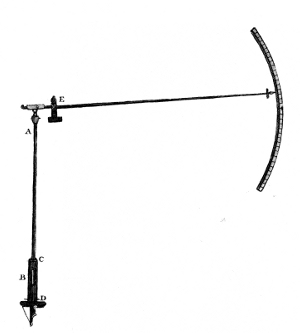
Figure 15.—"Steelyard barometer" as shown in Charles
Hutton's Mathematical and Philosophical Dictionary (London, 1796, vol.
1, p. 188). Hutton makes no reference to the originator of this
instrument; he attributes the "Diagonal" (or inclined) barometer to
Samuel Morland.
[Pg 114]
From 1875 the question was no longer one of the introduction of
self-registering instruments to major observatories but their complete
mechanization and the extension of registration to substations. Having
accepted self-registration, meteorologists turned their attention to the
simplification of instruments. In 1904 Charles Marvin, of what is now
the U.S. Weather Bureau, brought the self-registering barometer into
something of a full circle by producing an instrument (fig. 14) that was
nothing more than Hooke's wheel barometer directly adapted to
recording.[32] But this process of simplification had been accomplished
at a stroke, about 1880, with the introduction by the Parisian
instrument-maker Jules Richard of a self-registering barometer and a
thermometer combining the simplest form of instrument with the simplest
form of registration (see fig. 16). This innovation, which fixed the
form of the conventional registering instrument until the advent of the
radiosonde, seems to have stemmed from a source quite outside
meteorology—the technology of the steam gauge. Richard's thermometric
element was the curved metal tube of elliptical cross-section that
Bourdon had developed several decades earlier as a steam gauge. Pressure
within such a tube causes it to straighten, and thus to move a pointer
attached to one end. Bourdon had opened it to the steam source. Richard
filled it with alcohol, closed it, and found that the expansion of the
alcohol on heating caused a similar straightening. His barometric
element was a type of aneroid, which Hipp had already used but which
Richard may have also adopted from a type of steam gauge. For a
recording mechanism, Richard was able to use a simple direct lever
connection, as the forces involved in his instruments, being
concentrated, were not greatly hampered by friction.[33] By 1900 these
simple and inexpensive instruments had relegated to the scrap pile,
unfortunately literally, the elegant products of the mass attack of
observatory directors in the 1860's on the problem of the
self-registering thermometer and barometer.[34]
Conclusions
In view of the rarity of special studies on the history of
meteorological instruments, it is impossible to claim that this brief
review has neglected no important instruments, and conclusions as to the
lineage of the [Pg 115]late 19th century instruments can only be tentatively
drawn. The conclusion is inescapable, however, that the majority of the
instruments upon which the self-registering systems of the late 19th
century were based had been proposed and, in most cases, actually
constructed in the 17th century. It is also evident that in the 17th
century at least one attempt was made at a system as comprehensive as
any accomplished in the 19th century.
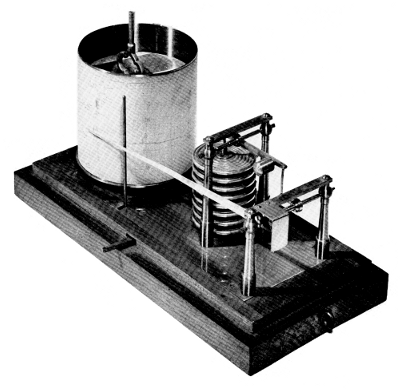
Figure 16.—Richard's registering aneroid barometer, an
instrument used at the U.S. Weather Bureau about 1888. The Richard
registering thermometer is similar, the aneroid being replaced by an
alcohol-filled Bourdon tube. (USNM 252981; Smithsonian photo
46740-C.)
To attribute the success of self-registering instruments in the late
19th century to the unquestionable improvements in the techniques of the
instrument-maker is to beg the question, for it is by no means clear
that the techniques of the 17th-century instrument-maker were unequal to
the task. It should also be noted that the photographic and
electromagnetic systems of the 19th century seem to have been something
of an interlude, for some of the latest and most durable (all of
Draper's and Richard's instruments and Marvin's barograph) were purely
mechanical instruments, as had been those of Hooke and Wren. If we
conclude that the 19th-century instruments were more accurate, we should
also recall Forbes' comments upon the question of instrumental accuracy.
What, then, was the essential difference between the 17th and 19th
centuries that made possible the development of the self-registering
observatory? It would appear to have been a difference of degree—the
maturation in the 19th century of certain features [Pg 116]of the 17th. The
most important of these features were the spread throughout the western
world of the spirit that had animated the scientific societies of
Florence and London, the continued popularity of the astronomical
observatory as an object of the philanthropy of an affluent society, and
the continued existence of the nonspecialized scientist. Under these
circumstances such nonmeteorologists as Wheatstone, Henry, Hough, Wild,
and Secci had the temerity to range over the whole of the not yet
compartmented branches of science and technology, fully confident that
they were capable of finding thereby a solution to any problem important
enough to warrant their attention.
U.S. GOVERNMENT PRINTING OFFICE, 1961.
For sale by the Superintendent of Documents, U.S. Government Printing Office, Washington 25, D.C. - Price 25 cents
Transcriber's Note:
Minor errors in punctuation have been corrected without note.
The following typographical errors in the original have been corrected:
P. 110: 'a panopoly of gadgetry': corrected to panoply
P. 113, caption to Figure 13: 'Feuss': corrected to Fuess
Footnote 28: 'Gewerbeaustellung': corrected to Gewerbeausstellung
Footnote 28: 'Physikalisches Worterbuch': corrected to Wörterbuch
Footnote 29: 'see also Gerland and Traümuller': corrected to Traumüller
Return to Book Index----------Top of Page















